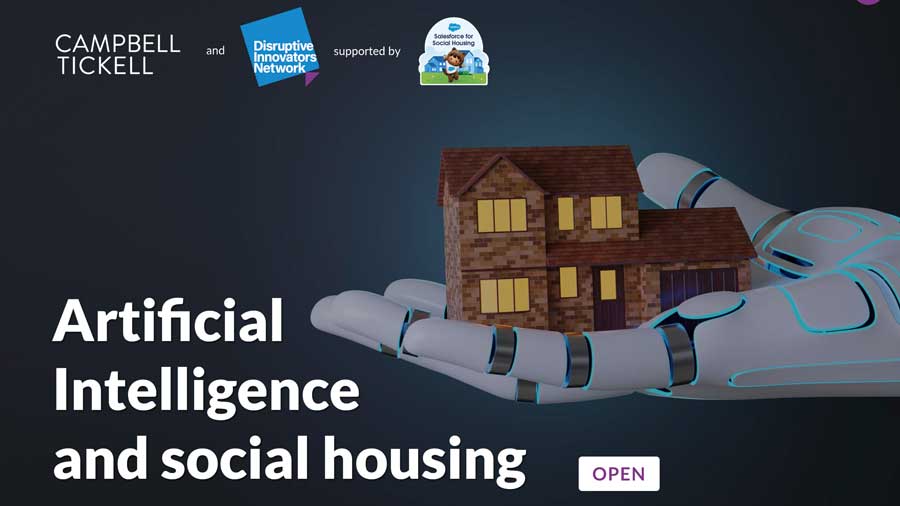Image: Istock
Using AI to improve council homes
Royal Greenwich’s experience of implementing AI systems to upgrade its housing stock

INNOVATION & IMPROVEMENT

Cllr Anthony Okereke
Leader of the Council, Royal Borough of Greenwich

Anthony Okereke
Leader of the Council, Royal Borough of Greenwich
Issue 77 | April 2025
It’s our Royal Greenwich mission to ensure safe and secure homes are available for everyone in our borough. But councils up and down the country face an unprecedented and unrelenting housing crisis, with rising costs and budgets decimated by previous central governments; exacerbated by ever-increasing demand, creating a perfect storm. At the same time, we are grappling with a climate crisis, meaning we need greener and cleaner council homes – a task that challenges at the technical, financial, and organisational level.
So, what can we do? We need to think differently so we can improve the council homes we have quickly, sensibly and effectively for the taxpayer. In Royal Greenwich we’re using data and artificial intelligence (AI) to efficiently manage resources.
Powerful system: actionable insights
Working together with DG Cities, the council’s digital innovation company, we’ve developed a trailblazing home-by-home plan. It uses a simple traffic-light system to show the repair priorities across the housing stock, outlining a capital works programme that manages the trade-offs between urgent repairs with long-term upgrades.
Our aim was to have a simple, yet powerful, system that uses existing data to create actionable insights.
Most housing providers already collect a wide range of data, from stock reports to tenant satisfaction surveys, but the challenge is to know what you do with that data – which is where we started from as well.
“Our aim was to have a simple, yet powerful, system that uses existing data to create actionable insights.”
First step
The first step is cleaning – removing inaccuracies and consolidating data so it can be used reliably. To minimise costs, we have not gathered any new data as part of this process; we are making much more use of what is already available. Using AI has unlocked the value hiding in large, unstructured repair logs, giving us a unique view into the actual conditions in homes.
Our method was designed with the relevant teams, to ensure the resulting insights would be trusted, and more importantly, useful. As a result, we have a system that uses a combination of metrics as opposed to relying on often old and incomplete surveys. Our innovative analysis means we can quickly see which properties need urgent work, and which properties need less immediate work – ensuring the plan reflects both the urgency of repairs and our strategic priorities.
Crucially, this data-driven approach enables more efficient resource allocation. We know that a lot of homes could use work – so we need to know where our limited funds will have the highest impact in our communities.
By combining different work that can be done simultaneously, we can minimise disruption to residents, and reduce overall costs. At the same time, year-by-year projects can be mapped out, optimising not only individual homes but entire estates or neighbourhoods, allowing us to apply for funding both internally and externally based on data-informed foundations.
Flexibility is key
As new data emerges, or conditions change – whether due to financial constraints or unexpected repair needs – the analysis can be updated. This adaptability ensures we can stay on track towards objectives around things like reducing damp and mould, ensuring decent home standards and net zero targets.
We are now looking at how this analysis can be used to move from coordinating improvements at the level of individual homes or small subsets and be deployed across larger estates and other council assets like schools or community centres. Through a structured assessment, some estates might look too costly to repair over the medium term, allowing us to evaluate the benefits of wider estate regeneration.
Fundamentally, the novel way we collect and review the data we hold, the analysis we do with previous information, and the AI toolsets DG Cities has developed, bring real and vital insights to our decision making – helping us provide safe and secure homes for those who need them.

